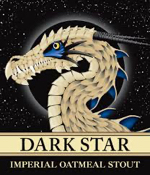 For those of us who run long distances consistently throughout the year, one of the persistent challenges we face is the changing of the seasons. Unless we live in one of those places with little seasonal variation, all of us at some point need to adapt to changing environmental circumstances. Hot becomes cold, calm becomes windy, wet becomes dry, and so on. And while for me these seasonal changes are enough to force me to mix things up, the biggest impact on my daily running comes not with climatic conditions at all but rather through the impact of daylight or the lack thereof.
For those of us who run long distances consistently throughout the year, one of the persistent challenges we face is the changing of the seasons. Unless we live in one of those places with little seasonal variation, all of us at some point need to adapt to changing environmental circumstances. Hot becomes cold, calm becomes windy, wet becomes dry, and so on. And while for me these seasonal changes are enough to force me to mix things up, the biggest impact on my daily running comes not with climatic conditions at all but rather through the impact of daylight or the lack thereof.
For most of my running life, I have been a morning runner. Set in my ways, I typically wake to the alarm at 5 a.m., pad to the kitchen to fire up the coffee, scan the news of the day while sipping said coffee, stumble around for a few minutes gathering up my running stuff, and ultimately step off my doorstep sometime between 5:45 and 6:15.
From January through March, here in the Northern Hemisphere, these runs start in the dark. But as spring creeps into the eastern sky with each passing week, I enjoy a little more daylight with each run. By the time April Fools’ Day rolls around, I am often starting my run with a hint of daylight in the sky and by the time the Summer Solstice arrives, I complete my runs in full-blown sunshine. Then, through most of the summer months, my daily outings are bathed in the glorious light of midsummer mornings. Only after the U.S.’s Labor Day do I start to lose some of the morning glow from the sky but shortly thereafter the darkness comes quickly and ruthlessly. Which brings me to the stage of the year that is most difficult for a daylight chaser like myself.
I am writing this on October 1, which is for me the unofficial first day of the “dark times.” Between now and New Year’s Day, each of my morning runs gets progressively darker, more gloomy, and, frankly, a little bit more of a chore to slog through. I get a slight reprieve when the clocks change back to standard time in early November but sadly that respite is short lived, as the month of December looms when my daily runs not only start but end in darkness.
Through these “dark times” runs over the years, I have found myself in a place of deep introspection. Typically my “off season,” none of these runs are particularly quality in nature and yet the emotional and psychological benefits gained from striding through the daily darkness brings a certain sense of peace. For whatever reason, running in the dark makes me a bit more aware of my sensory reactions to things, a slight ruffling of leaves in the woods, the smell of frost on the fields and, if I am lucky, the view of a brilliant shooting star blazing across the dark sky. This sensory awareness invariably sets my mind at ease and, I like to think, prepares me more adequately to celebrate the inevitability of the light that always comes after dawn. Here’s to the “dark times!”
Bottoms up!
AJW’S Beer of the Week
 This week’s Beer of the Week comes from Fremont Brewing Company in Seattle, Washington. Known for their dark beers, Fremont’s flagship beer is Dark Star Imperial Oatmeal Stout. With an ABV of 8%, Dark Star is not for the timid and yet it is a silky, smooth brew with a hint of sweetness to counteract the smoky, toasty taste. The kind of beer that’s great to curl up with at the campfire, Dark Star is one of my favorite stouts.
This week’s Beer of the Week comes from Fremont Brewing Company in Seattle, Washington. Known for their dark beers, Fremont’s flagship beer is Dark Star Imperial Oatmeal Stout. With an ABV of 8%, Dark Star is not for the timid and yet it is a silky, smooth brew with a hint of sweetness to counteract the smoky, toasty taste. The kind of beer that’s great to curl up with at the campfire, Dark Star is one of my favorite stouts.
Call for Comments
- To use AJW’s language, what are the “dark times” of your running year? Can you explain what those dark times feel like and how you navigate them?
- And what about the rest of your running year? In what part of the year do your runs feel the easiest or brightest?
